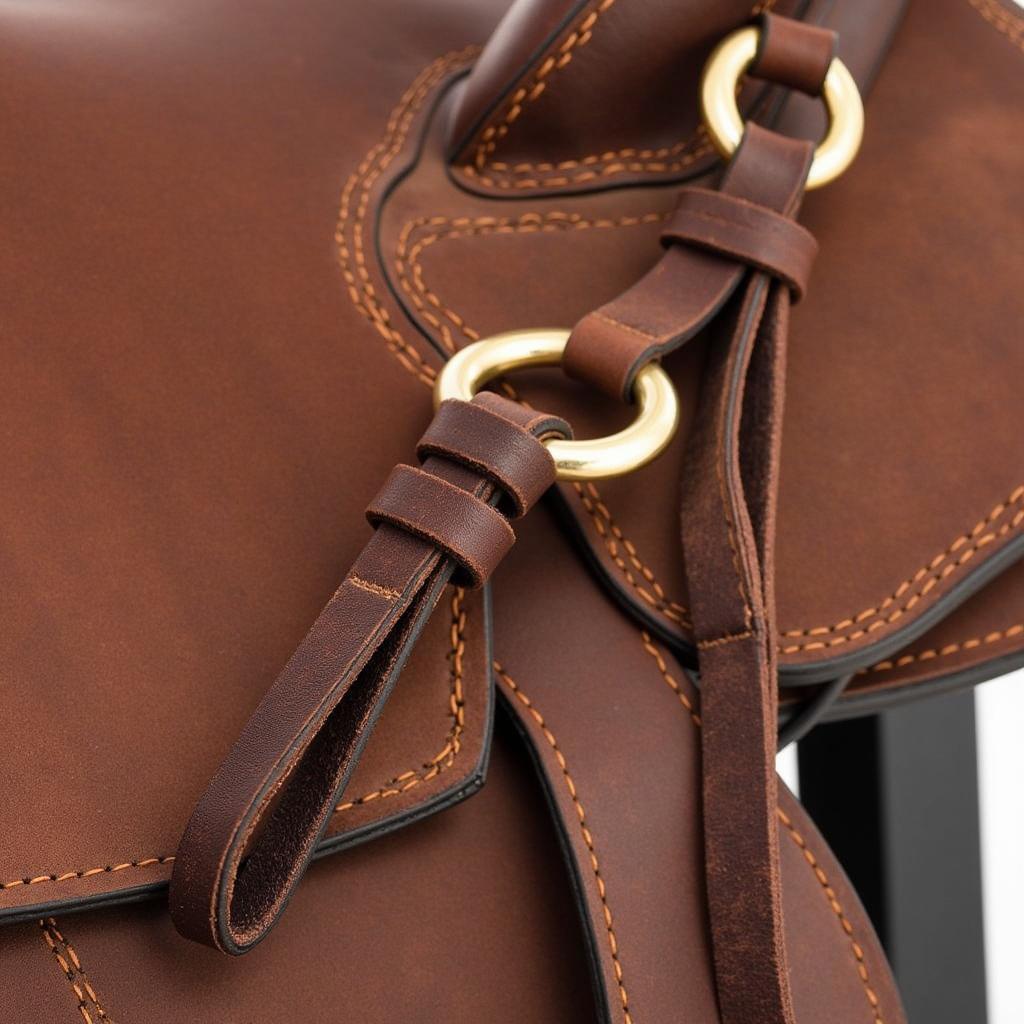The Horse Latigo is a vital component of western saddles, playing a key role in securing the cinch and ensuring a comfortable and safe ride. This article delves into the intricacies of the latigo, exploring its types, functions, proper usage, and maintenance.  Western Saddle Latigo and Cinch
Western Saddle Latigo and Cinch
What is a Horse Latigo?
A horse latigo is a long strap, traditionally made of leather, that connects the cinch to the rigging of a western saddle. It allows for adjustments to the cinch tightness, ensuring a secure fit without compromising the horse’s comfort and freedom of movement. Different types of latigos exist, each with its advantages and preferred uses. Choosing the right latigo is essential for both horse and rider safety.
After the opening paragraph, the first internal link is placed here: Check out our collection of leather horse hobbles.
Types of Horse Latigos: Exploring the Options
Several types of horse latigos cater to different riding styles and preferences. Understanding the distinctions between them can help you select the best option for your needs.
Leather Latigos: The Classic Choice
Leather latigos are the traditional and most common type, known for their durability and classic look. They require regular cleaning and conditioning to maintain their suppleness and prevent cracking.
Synthetic Latigos: Modern and Easy-Care
Synthetic latigos, often made from materials like nylon or biothane, offer a lightweight and easy-to-clean alternative to leather. They are resistant to weather and require minimal maintenance.
Off-Billet Latigos: A Specialized Design
Designed for saddles with off-billets, these latigos have a unique configuration that allows for a more even distribution of pressure on the horse’s rib cage.
How to Use a Horse Latigo Correctly
Proper use of the horse latigo is crucial for both the horse’s comfort and the rider’s safety. Here’s a step-by-step guide:
- Ensure the cinch is positioned correctly on the horse’s girth area.
- Thread the latigo through the cinch ring and the rigging D-rings on the saddle, following the appropriate pattern for your latigo type.
- Tighten the latigo gradually, checking for proper cinch tightness.
- Secure the latigo with the designated buckle or knot.
- Regularly check the cinch tightness during the ride, especially after the initial tightening.
Are you looking for the perfect team penning partner? Explore our team penning horses for sale.
Caring for Your Horse Latigo
Maintaining your horse latigo ensures its longevity and optimal performance. Regular cleaning and conditioning are essential for leather latigos, while synthetic latigos require simpler cleaning.
Leather Latigo Care
- Clean your leather latigo regularly with a damp cloth and saddle soap.
- Condition the leather with a quality leather conditioner to keep it supple and prevent cracking.
Synthetic Latigo Care
- Rinse your synthetic latigo with water and mild soap.
- Allow it to air dry completely before using it again.
What exactly makes the latigo so important? Simply put, it’s the linchpin of a secure saddle fit, directly impacting your horse’s comfort and your control in the saddle.
Conclusion
The horse latigo, a seemingly simple strap, is a critical part of western tack. Understanding its function, proper usage, and maintenance is essential for any western rider. By choosing the right latigo and caring for it diligently, you contribute significantly to the safety and comfort of both horse and rider. Be sure to visit our comprehensive guide on latigo horse for more detailed information.
FAQs
- What is the difference between a single-ended and double-ended latigo?
- How tight should a horse latigo be?
- Can I use a synthetic latigo on a leather saddle?
- How often should I clean my horse latigo?
- What are the signs of a worn-out latigo?
- How do I choose the right latigo for my saddle?
- What are the different materials used to make horse latigos?
Here are some common scenarios where you might have questions about your horse latigo:
- Scenario 1: You’re a new horse owner and are unsure how to properly tighten the latigo on your saddle.
- Scenario 2: Your leather latigo has become stiff and cracked, and you’re wondering how to restore its suppleness.
- Scenario 3: You’re considering switching to a synthetic latigo but are unsure if it’s compatible with your saddle.
If you need further assistance, consider exploring these other articles on our website:
- Guide to Western Saddle Parts
- Horse Tack Care and Maintenance
- Choosing the Right Saddle for Your Horse
Need help with your horse latigo or other equestrian equipment? Contact us! Phone: 0772127271, Email: [email protected] or visit us at QGM2+WX2, Vị Trung, Vị Thuỷ, Hậu Giang, Việt Nam. We have a 24/7 customer service team ready to assist you.